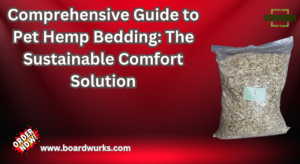Tension. It’s something we all experience, often multiple times throughout the day, whether it’s the tightness in our shoulders after a long workday, the clenching of our jaws during stressful conversations, or the knot in our stomach before a big event. It seems like a universal experience, and yet, the relationship between tension in the body and emotional states remains largely overlooked. The body’s stiffness, or its “tension,” can reveal far more than just the consequences of stress. Hidden within these physical manifestations lies a profound and often unspoken language—one that can point to unresolved emotional blocks, past traumas, and mental struggles that have remained unprocessed. But what if the geometry of this tension could offer us insight into our emotional health?
In this article, we will explore how tension and stiffness in the body can serve as clues to understanding emotional blockages, and how identifying and releasing these tensions can lead to a deeper sense of healing and self-awareness.
Understanding Tension: More Than Just a Physical Response
Tension in the body is a complex interplay of physical, psychological, and emotional forces. On a basic level, tension is the result of muscles contracting in response to various stimuli. Our muscles tense when we are cold, when we are exerting physical energy, or when we experience stress or fear. But, there is a deeper layer to tension, one that is often emotional in nature.
When we experience stress, fear, or anxiety, our bodies instinctively respond. This response, which once served as a protective mechanism (e.g., the fight-or-flight response), is now often triggered by less immediate dangers—work pressures, relationship problems, or the strain of modern living. Over time, these physical responses become habitual, leading to chronic tension and stiffness in certain areas of the body.
In fact, chronic physical tension can often be seen as a manifestation of emotional tension. When we hold onto unresolved emotions—whether they’re stress, anger, sadness, or fear—these emotions have a way of “storing” themselves in the body. If we don’t process and release these emotions in healthy ways, they can begin to manifest physically as stiffness, tightness, and discomfort.
The Hidden Geometry: Mapping Emotional Blocks Through Physical Tension
There is an interesting connection between the areas where we carry tension in the body and the types of emotional struggles we may be experiencing. For example, common patterns of physical tension often correlate with specific emotional blocks:
Shoulder and Neck Tension:
This is one of the most common areas where people carry stress. When we feel burdened or overburdened, emotionally or mentally, our shoulders and neck may become tight. This can be a physical manifestation of carrying the weight of responsibilities, anxiety about the future, or even unresolved emotional baggage. The shoulders symbolize the ability to “carry” weight—both physically and metaphorically.
Back Pain (Upper and Lower):
The back is often referred to as the “support system” of the body. When we experience emotional difficulties related to feeling unsupported or ungrounded, we may start to feel stiffness and discomfort in the back. Chronic lower back pain, in particular, has been associated with feelings of insecurity, financial stress, and instability.
Jaw and Teeth Clenching:
Often, this is a sign of suppressed anger or frustration. Many people hold tension in their jaw as a way of holding back emotions they’re unable or unwilling to express. Over time, this can result in physical symptoms such as teeth grinding, temporomandibular joint (TMJ) disorder, and chronic headaches.
Chest Tightness:
Emotional trauma, grief, and unresolved sadness often manifest in the chest area. The chest, as the physical home of the heart, is strongly linked to emotions of love, loss, and emotional vulnerability. If someone has experienced heartbreak, deep sadness, or emotional abandonment, they may feel a tightness or constriction in the chest.
Stomach and Digestive Issues:
The stomach is highly sensitive to emotional distress. Anxiety, worry, and fear are often physically felt in the gut. The expression “butterflies in the stomach” refers to the body’s physical reaction to anxiety, but prolonged emotional stress can lead to more serious issues, such as digestive problems, bloating, and even irritable bowel syndrome (IBS).
While it may not be immediately obvious, these patterns of tension form a sort of hidden “geometry” within our bodies. Like a map, the stiffness in one area of the body corresponds to an emotional map of struggles that have remained unprocessed or repressed. When we begin to notice these patterns, we can start to identify and release the emotional blocks causing them.
How to Decode the Geometry of Tension
Becoming aware of the tension in your body is the first step to unlocking the emotional blocks that might be hidden beneath the surface. The body’s stiffness can act as a guide, leading us to the areas of life or psyche where we may need to focus our healing efforts. Here are a few steps you can take to decode the geometry of tension in your body:
1. Mindful Body Awareness
One of the most powerful tools for uncovering hidden emotional blocks is mindfulness. Paying close attention to your body’s sensations can help you pinpoint areas of tension and explore what might be causing it. Use deep breathing and mindful observation to scan your body from head to toe, noticing areas of tightness or discomfort. Are you feeling tightness in your shoulders? Is there a heaviness in your chest? Is your stomach in knots? Acknowledge these sensations without judgment, and begin to ask yourself, “What emotional experience might be linked to this tension?”
2. Exploring Emotions in the Body
Once you’ve identified areas of tension, take a moment to sit with those feelings. Close your eyes and connect with the area of the body where you feel tight. Ask yourself questions like: “What is this tension trying to tell me?” and “What emotions am I holding on to here?” Allow yourself to feel whatever comes up, whether it’s anger, fear, sadness, or frustration. Sometimes, simply acknowledging and giving space to these emotions can help to release them.
3. Release Through Movement
Movement can be an effective way to release stored tension and emotional blocks. Practices like yoga, tai chi, and even simple stretching can help loosen physical stiffness while promoting emotional release. For example, heart-opening yoga poses such as “Camel Pose” or “Chest Opener” can help alleviate tension in the chest and release emotional pain tied to heartbreak or grief. Similarly, hip-opening stretches can address the physical tension that arises from emotional repression or fear.
4. Talk Therapy or Journaling
Sometimes, the emotional blockages causing physical tension are so deep-rooted that simply feeling them is not enough. Talking with a therapist or counselor can help you explore these emotions in a safe and supportive environment. Writing down your thoughts and feelings in a journal can also be a powerful way to process and release emotions. Journaling can help you identify patterns or recurring thoughts that might be contributing to your body’s tension.
5. Breathwork and Relaxation Techniques
Breathing techniques can also assist in releasing emotional blocks stored in the body. Practices like deep abdominal breathing or progressive muscle relaxation help to activate the body’s parasympathetic nervous system, which calms the fight-or-flight response and promotes relaxation. When the body is able to relax, it becomes easier to release the emotional tension that is often tied to chronic physical discomfort.
The Path to Healing: Integrating Body and Emotion
The key to releasing emotional blocks is learning to integrate body awareness with emotional understanding. Tension is not merely a physical ailment; it is an invitation to look deeper within ourselves. By understanding the hidden geometry of tension—how it manifests in the body and what it represents emotionally—we can begin to heal on a much deeper level. As we release these blocks, we allow our bodies and minds to reconnect, bringing us closer to a state of holistic wellness.
In conclusion,
The stiffness and tension in your body may be telling you something far more profound than just “you’re stressed.” Through mindfulness, emotional exploration, movement, and healing techniques, you can unlock the hidden messages in your body and start the process of emotional release. The geometry of your tension may be complex, but it is not without its wisdom. By listening to your body, you open the door to self-discovery and lasting emotional healing.







